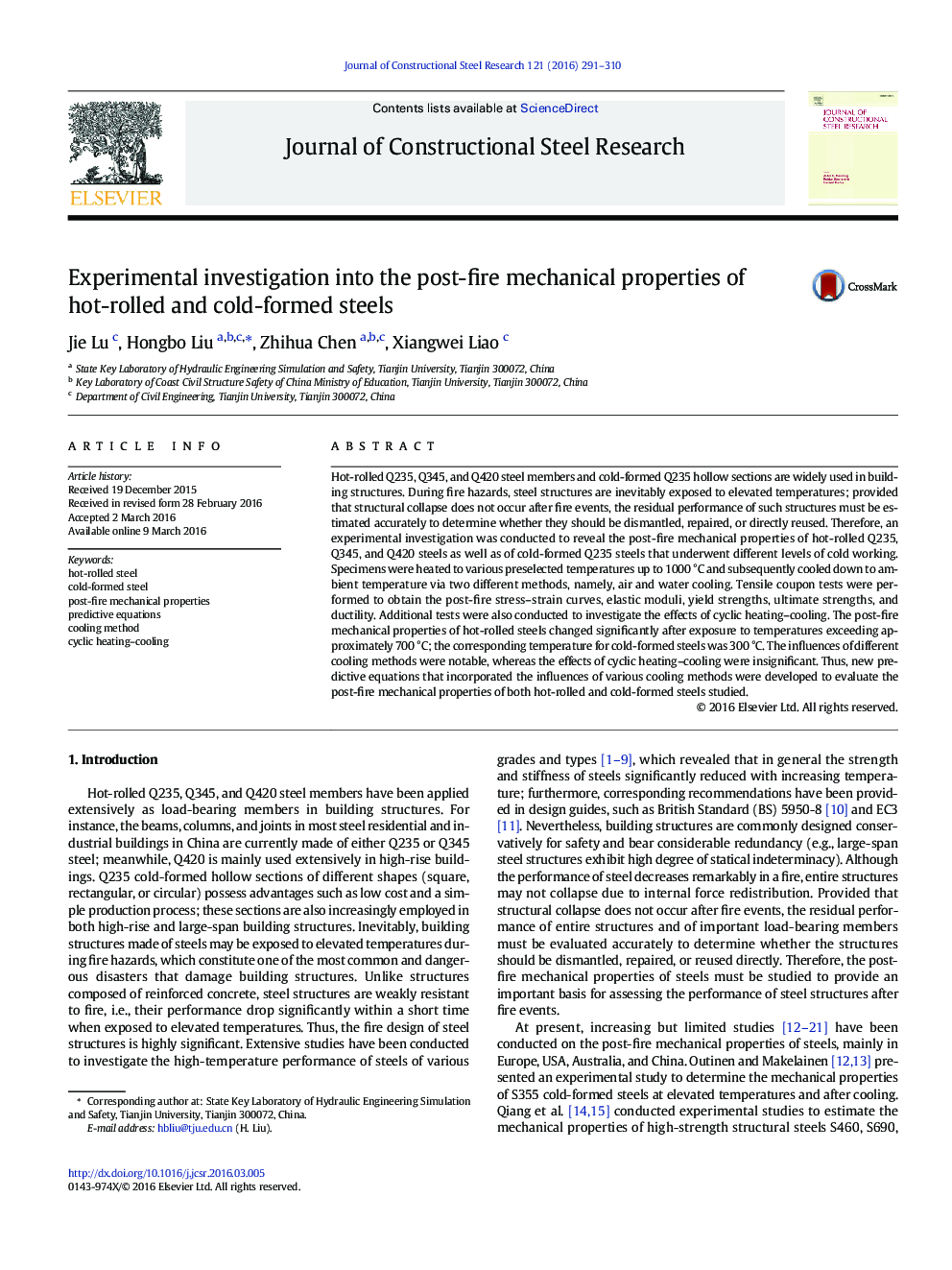| کد مقاله | کد نشریه | سال انتشار | مقاله انگلیسی | نسخه تمام متن |
|---|---|---|---|---|
| 284236 | 509133 | 2016 | 20 صفحه PDF | دانلود رایگان |
• Test on hot-rolled Q235, Q345, Q420 steels and cold-formed Q235 steel after fire.
• Mechanical properties significantly changed after exposure to certain temperatures.
• The influences of two different cooling methods were significant.
• The effects of cyclic heating–cooling and cold working were discussed.
• Predictive equations were proposed to evaluate the post-fire mechanical properties.
Hot-rolled Q235, Q345, and Q420 steel members and cold-formed Q235 hollow sections are widely used in building structures. During fire hazards, steel structures are inevitably exposed to elevated temperatures; provided that structural collapse does not occur after fire events, the residual performance of such structures must be estimated accurately to determine whether they should be dismantled, repaired, or directly reused. Therefore, an experimental investigation was conducted to reveal the post-fire mechanical properties of hot-rolled Q235, Q345, and Q420 steels as well as of cold-formed Q235 steels that underwent different levels of cold working. Specimens were heated to various preselected temperatures up to 1000 °C and subsequently cooled down to ambient temperature via two different methods, namely, air and water cooling. Tensile coupon tests were performed to obtain the post-fire stress–strain curves, elastic moduli, yield strengths, ultimate strengths, and ductility. Additional tests were also conducted to investigate the effects of cyclic heating–cooling. The post-fire mechanical properties of hot-rolled steels changed significantly after exposure to temperatures exceeding approximately 700 °C; the corresponding temperature for cold-formed steels was 300 °C. The influences of different cooling methods were notable, whereas the effects of cyclic heating–cooling were insignificant. Thus, new predictive equations that incorporated the influences of various cooling methods were developed to evaluate the post-fire mechanical properties of both hot-rolled and cold-formed steels studied.
Journal: Journal of Constructional Steel Research - Volume 121, June 2016, Pages 291–310
